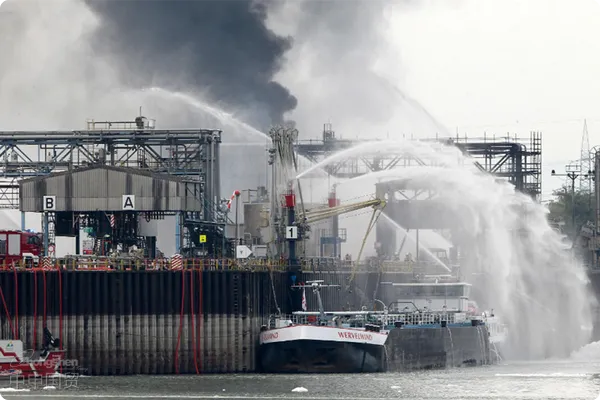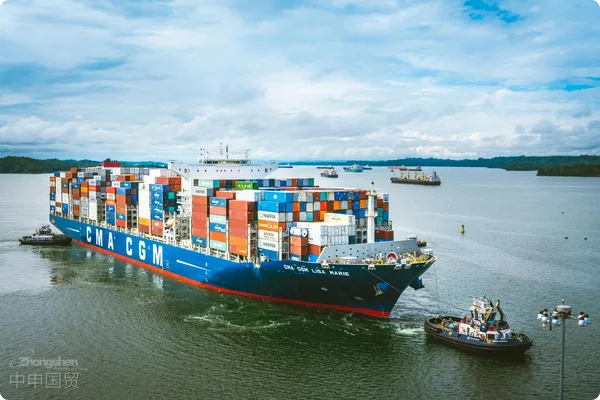- Shanghai Zhongshen International Trade Co., Ltd. - Two decades of trade agency expertise.
- Service Hotline: 139 1787 2118
On July 29, 2024, a severe explosion and subsequent fire occurred at a chemical plant of German chemical giant BASF at its Ludwigshafen site. The accident not only caused significant damage to the plant itself but also had widespread impacts on the global vitamin market. BASF later announced that the accident severely affected the production of vitamins A and E, as well as carotenoids, leading to the shutdown of related production facilities and force majeure disruptions to the supply chain.

BASF is a major player in the global vitamin market, especially in the production of vitamins A and E. Data shows that BASFs Ludwigshafen site accounts for 26.7% and 13.8% of global production capacity for vitamins A and E, respectively, with annual outputs of 14,400 tons and 20,000 tons. Thus, the explosion directly caused a sharp decline in global vitamin supply. According to preliminary police estimates, the direct economic loss from the explosion was approximately €2 million, equivalent to RMB 15.65 million.
The explosion not only directly impacted BASFs production capacity but also quickly rippled through the global vitamin market. Vitamins A and E, as critical raw materials widely used in food, pharmaceuticals, and feed industries, saw their supply shortages immediately trigger sharp price increases globally. This effect rapidly spread to markets including China, with extensive and profound impacts.
China, as a major consumer of vitamins globally, quickly felt the shockwaves of the incident. Since the explosion in late July, prices for some vitamin products in China have doubled. According to data from SCI99, the price of vitamin A surged to RMB 225 per kilogram on August 9, up RMB 139 from early July, a rise of over 160%. The price of vitamin E also rose significantly, increasing by nearly 94% compared to early July.
However, the BASF explosion was not the sole factor driving the price surge. In recent years, the global vitamin industry has experienced a price downturn, leading many plants to reduce or halt production, significantly shrinking industry capacity. Against this backdrop, the vitamin market had already entered an upward price cycle at the start of the year. The BASF explosion further exacerbated supply shortages, pushing prices higher.
The price increases in Chinas vitamin market were not limited to specific products but showed a broad-based upward trend. For example, Huang Qisheng, a vitamin trader in Suzhou, Jiangsu, noted that the price of vitamin A had quadrupled since the beginning of the year, while vitamin E prices rose from RMB 53 per kilogram at the start of the year to nearly RMB 160. Other vitamin products also saw price increases of 30% to 50%. This across-the-board price surge has had a significant impact on downstream industries.
With the sharp rise in vitamin prices, purchasing and sales sentiments across the industry have also changed markedly. Downstream customers, fearing further price hikes, have accelerated purchases, with inquiries noticeably increasing. Huang Qisheng stated that his companys monthly shipments had reached 30 to 50 tons, far exceeding the usual 10 to 15 tons. However, upstream producers have begun holding back supplies, shortening quotation periods and making it harder for traders to secure goods.
Huang Qisheng further pointed out that upstream suppliers quotation frequency has significantly decreased, sometimes limited to just three days in a month, followed by a two- to three-week pause. When suppliers resume quotations, prices often jump sharply, creating major challenges for traders procurement.
Experts believe that the supply-demand imbalance in Chinas vitamin market persists, and prices are expected to remain high in the short term. Wang Lin from SCI99 noted that the resumption of overseas plants remains uncertain, and market sentiment remains strong, which will support continued price strength in the short term. However, as prices reach high levels, terminal markets may see rigid demand-driven restocking, potentially leading to a gradual return to rationality, with future price fluctuations likely to stabilize at high levels.
The BASF explosion highlights the fragility of global supply chains, especially in the production of critical raw materials. As vitamin market prices fluctuate, global markets will continue to monitor BASFs production resumption and adjustments to the global vitamin supply chain. For industry participants, maintaining stable supply and price expectations amid this volatility will be a major challenge in the coming period.
Related Recommendations
? 2025. All Rights Reserved. Shanghai ICP No. 2023007705-2  PSB Record: Shanghai No.31011502009912
PSB Record: Shanghai No.31011502009912










